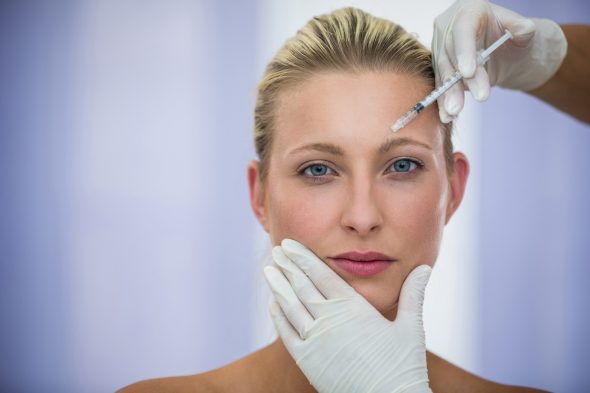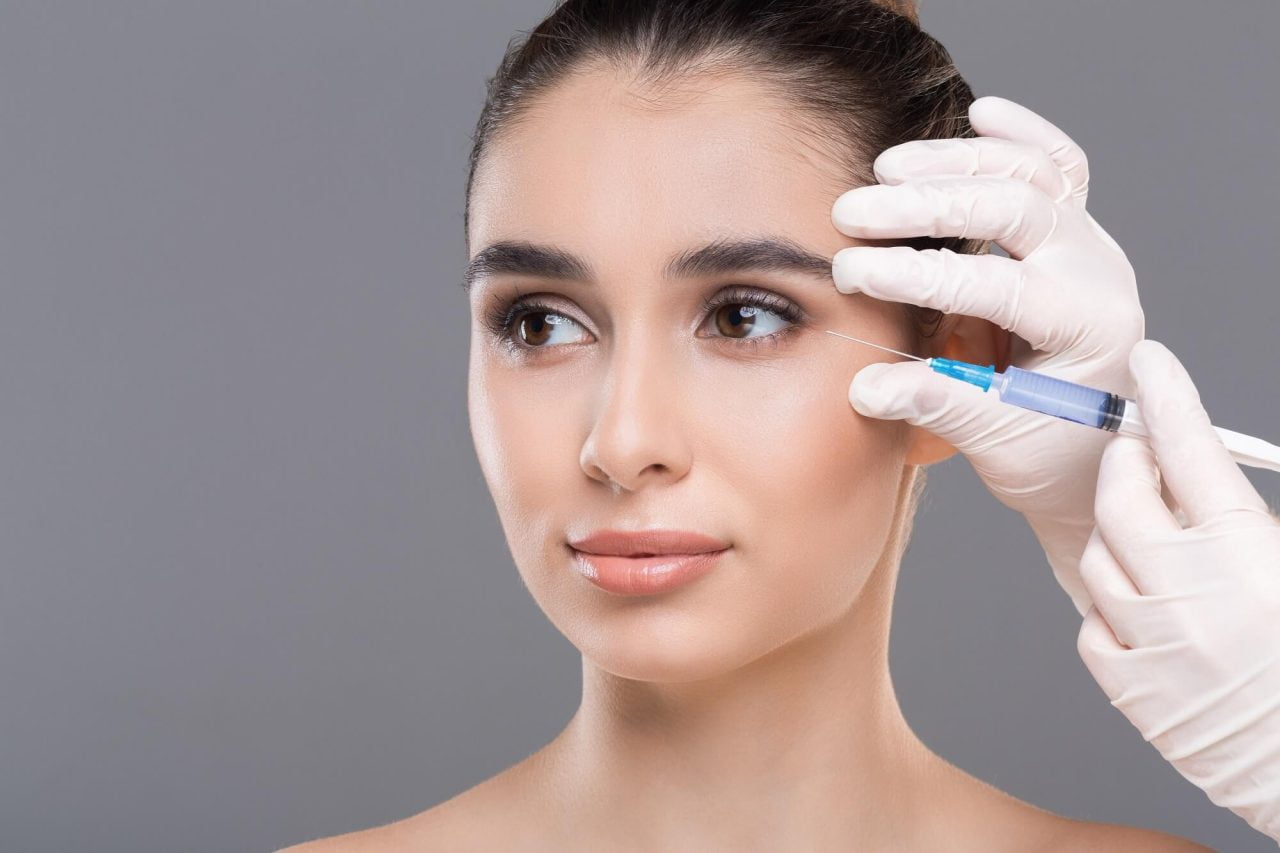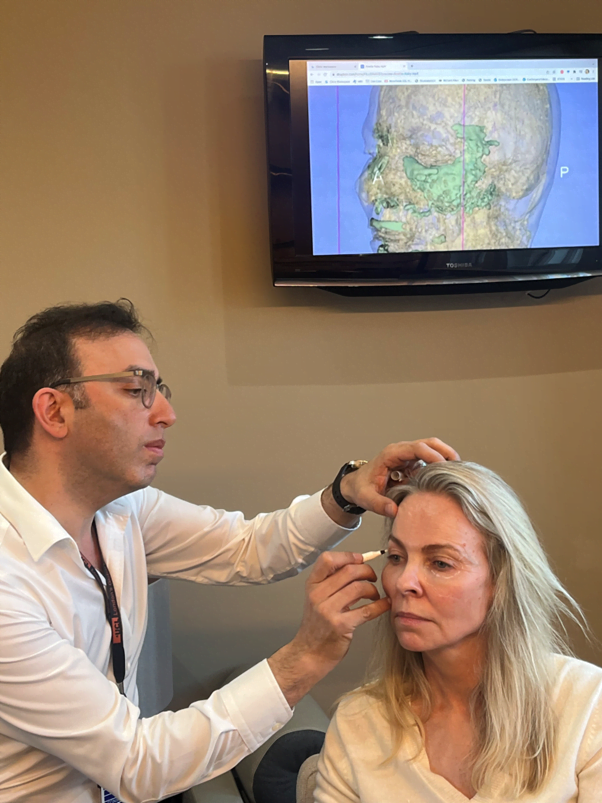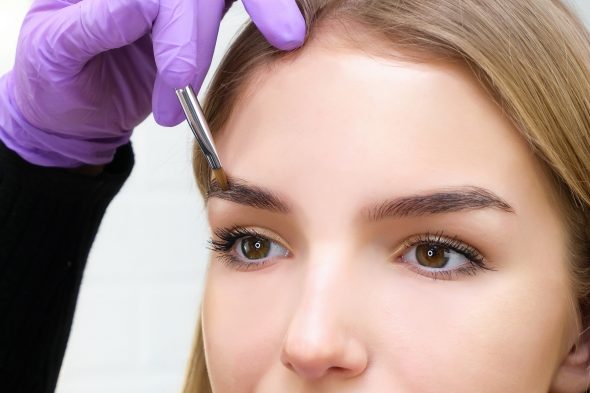Tear trough fillers are a non-surgical cosmetic treatment for those who wish to correct tired-looking eyes. This procedure has become increasingly popular in recent times, with patients seeking a quick, pain-free fix to the problem of tear trough hollows and loose skin in the under eye area – a natural result of the ageing process in which the skin loses volume and becomes laxer.
Many tear trough fillers use a hyaluronic acid base, which plumps the skin and even strengthens the skin’s natural barriers. This protects against damage caused by sun exposure, environmental pollution, smoking and other factors. These types of tear trough filler also draw in moisture, keep skin hydrated and supple-looking and build resilience against harmful ingredients in low-quality skincare products that can strip away the skin’s defensive barrier.
When performed correctly, tear trough treatment can achieve a smoother, younger, more rejuvenated appearance, with a noticeable reduction in under-eye bags and deep lines.
However, with an abundance of clinics and “medispas” now offering this treatment, unfortunately, not every practitioner who is performing it is highly qualified and has the specific knowledge and advanced technical experience needed to carry out the procedure effectively. As a result, we have seen a rise in dermal filler complications that require correction by a skilled practitioner.
If you have had dermal fillers that have gone wrong, we may be able to correct it for you. Continue reading as we outline the various problems that could occur as a result of botched tear trough treatment, why they might occur and how we can fix them for you.
Why Can Tear Trough Filler Go Wrong?
Dermal fillers are most likely to go wrong when they are performed by unskilled practitioners, who lack the proper understanding of patient anatomy, may choose the wrong type of filler, or do not appropriately select patients suitable for this type of treatment.
The tear trough is a complex area to treat as the tissues are much thinner here than in other areas of the face, making any sort of problem much more obvious. Likewise, the proximity to the eye means that tear trough treatment is best performed by skilled oculoplastic surgeons, such as Daniel Ezra or Caroline Wilde, who understand the complex anatomy of the eye area and can successfully manage any post-operative eye-related complications if they arise.
There is a wide range of fillers available with different properties which determine how cohesive or globular the fillers are. At The Ezra Clinic, we use a specialised filler, licensed for the under-eye area which contains a mixture of cross-linked and non cross-linked hyaluronic acid which have the right viscoelastic properties to fill the tear trough and reduces the risk of lumps. It also contains a mixture of antioxidants and vitamins to promote skin cell regeneration and improve the skin texture. Other clinics often use fillers which are not designed for the under-eye area which results in prominent swellings or an unnatural appearance.
Our experience, is that other clinics often recommend patients to layer further filler on top of existing filler which has not fully dissolved. Over time, patients can lose sight of their initial treatment goals and result in an over-filled appearance. Layering filler also predisposes to swelling and lumps. At The Ezra Clinic, we ensure that patients maintain a natural appearance and advise against excessive filler use.
Tear trough fillers are not the best treatment option for all patients and at The Ezra Clinic, you will have a full consultation and examination prior to a treatment being recommended to you. In certain cases, such as prominent eye bags, malar oedema or festoons, fillers can accentuate the problem and cause the appearance of a swollen under-eye.
Extremely rarely, fillers can be injected into a blood vessel which can cause tissue necrosis or even blindness. Understanding the complex eye anatomy is critical to preventing this complication as well as specialised injection techniques. You should ensure that your practitioner is able to deal with these rare complications, should they occur.
What Problems Can Occur After Tear Trough Filler?
Overfilled tear trough area / lumps after tear trough filler
A common problem encountered as a result of a practitioner using too much filler is the overfilling of the tear trough area, resulting in puffiness or noticeable lumps that may become more obvious when a patient smiles or when looking at the area from above. The tear trough area is subtle, so the aim of tear trough treatment should be to improve but not eliminate the area completely.
As mentioned above, our solution to help correct the problem of an overfilled tear trough area is to dissolve the filler. Once this has settled, we can then apply the correct amount of filler, achieving a subtle change in appearance and the desired result of a younger, fresher you.
Discolouration under the eyes after filler
Discolouration can occur where filler is injected under the skin only superficially. This is also known as the “Tyndall effect” and can result in a green/blue discolouration that may become more noticeable in daylight. Some patients describe this as tear trough bruising. Correctly applied tear trough under eye filler should be injected deeply into the skin rather than just at the surface.
Our resolution to this problem would be, again, dissolving tear trough filler using the hyaluronidase enzyme. We then invite the patients back to the clinic after several weeks to correctly insert the filler in the right area.
Swelling under the eyes after filler
Following tear trough under eye filler, some patients may experience swelling under the eye area or in the mid-cheek region. This occurs when filler is incorrectly placed above the orbicularis retaining ligament or is inserted under the skin too superficially. As fillers attract water, it can result in under-eye swelling where the solution is placed too close to the surface.
The choice of filler product must also be carefully selected, as there are different types and they vary in the amount of water they attract and, therefore, the potential they have to cause swelling. A highly skilled practitioner will know which type is most appropriate.
Where a patient presents to us with the problem of under-eye swelling, our solution is again to dissolve the filler. Once the filler has completely dissolved, we will invite the patient back for another consultation and assess whether they are a good candidate for under eye dermal fillers.
Some patients are unsuitable for treatment and a common problem we see is botched filler as a result of the application of filler in people who do not need it or who may be better suited to other cosmetic eye treatments, such as blepharoplasty surgery.
Who is unsuitable for tear trough filler?
Patients with dark skin pigmentation / seeking eye fillers for dark circles
If your biggest concern is dark circles under the eyes, then tear trough filler may not be the right treatment for you. Under-eye dark circles are a complex problem to treat and tear trough fillers will not fix the issue of skin pigmentation. In fact, if your dark circles are caused by a darker pigment in your skin, then filler may accentuate them.
Treatments such as chemical facial peels and laser skin treatments may be more appropriate but, again, these should only be performed by trained professionals.
Patients with festoons/malar bags
Festoons or malar bags are swollen, puffy bags appearing under the eyes, which commonly occur due to midface ageing.
A very common problem that we see in our clinic is the worsening of malar bags as a result of previous tear trough filler treatment. As fillers tend to cause swelling, any patient with malar bags or festoons should avoid filler treatment, as this will only exacerbate the problem.
Patients with excess skin and heavy under-eye bags
People with excessive under-eye bags or loose skin may be better suited to eye bag removal surgery, known as blepharoplasty, a long-term solution to tired-looking eyes.
Blepharoplasty is the removal of excess skin and muscle from the upper or lower eyelid area, reducing or repositioning the underlying fat to result in a more youthful appearance. Our surgeons are highly skilled specialists in blepharoplasty.
How Do I Find a Reputable Clinic?
Hyaluronic acid fillers are a safe choice for tear trough fillers and constitute a non-invasive procedure. However, a safe procedure is not the same as an easy procedure, and considering the delicate nature of the under-eye skin, only highly qualified practitioners should ever administer tear trough fillers.
The majority of botched dermal fillers occur when administered by an under-qualified practitioner. That’s why it is essential to recognise a good clinic and practitioner.
Your practitioner’s qualifications
In the UK, there is currently no legal requirement for practitioners who administer non-surgical cosmetic treatments such as fillers to have qualifications. Even practitioners without any prior training are legally allowed to administer a dermal filler.
Although many people will not associate aesthetic treatments with medicine, procedures correcting tear troughs are considered medical treatments and should only be administered by medical professionals.
To ensure that your practitioner is qualified to administer dermal filler, you should confirm that they have the necessary training.
Experienced practitioners will be willing to share this with you; if a practitioner is reluctant to share their qualifications with you, they are unlikely to be sufficiently trained. Medical professionals who wish to progress in a healthcare career in the UK should also be registered with a medical body such as the General Medical Council.
Our leading oculoplastic surgeons are highly qualified to administer dermal fillers and correct botched fillers administered by underqualified practitioners.
Pre-procedure consultation
You should always be offered a consultation prior to your tear trough filler treatment. Your practitioner should ensure that you are suitable for the treatment, and if they have concerns, they should be honest and transparent about managing your expectations. This is an opportunity for you to ask questions about the procedure and for your practitioner to respond to any concerns.
In the case of a client who is unsuitable for tear trough fillers, our clinic will be able to suggest alternative solutions. Less qualified practitioners may lack the expertise to do this.
If your practitioner does not take the time to look through your medical history and ensure that you are suitable for fillers, they are likely not sufficiently trained. A lack of attention to your general health demonstrates a limited understanding of the risks involved with dermal fillers and eye anatomy.
Our clinic ensures that all patients receive in-depth consultations, complete with an eye and orbital examination to ensure that fillers are the correct option for you. Our oculoplastics surgeons will outline the possible risks before the procedure and give you honest advice about what can be achieved with fillers. Our clinic’s dermal filler treatments and corrections of botched fillers are all safe and carefully considered.
Comfort and cleanliness
Your consultation should make you feel at ease and in capable hands. Your practitioner should never push you to go ahead with a dermal filler treatment that you are not sure about, and their expertise in their field should be clear and reassuring.
As with any medical procedure, the clinic’s environment should also feel clean and hygienic.
Our clinic surpasses the highest standards of cleanliness, so you can be assured that your procedure is safe and sanitary.
Aftercare
Your practitioner is responsible for providing care even after your dermal filler treatment. During your consultation, you should always be sure to ask how the clinic will be able to support you in the event of a complication.
While it is normal to experience swelling and redness after procedures correcting tear troughs, your practitioner should also take time to explain how to identify any complications that arise so that you can resolve them as quickly as possible.
If you have had a negative experience with a clinic that has not provided care after a procedure, you may feel anxious about approaching another clinic for help to correct a botched dermal filler. Our clinic will always provide sufficient aftercare to patients, ensuring a positive experience and good relationship between patient and practitioner.
Our patients are always advised to contact us if they experience any problems following fillers or filler dissolving. You can feel reassured that even if a problem occurs after a dermal filler procedure, we will be quick to see you and resolve it.
How should correctly performed tear trough fillers look like?
If tear trough fillers are performed correctly by a skilled practitioner, results should be subtle, but make a noticeable difference to the appearance of tired eyes. Please refer to our past patient tear trough filler before and after pictures for a realistic view of how successful tear trough treatment should look.
Daniel Ezra is a leading oculoplastic surgeon who is experienced in dealing with previous tear trough filler complications. If you have had a tear trough treatment that has gone wrong, fill out our online form to book a consultation or call us now on 020 7127 8184.





